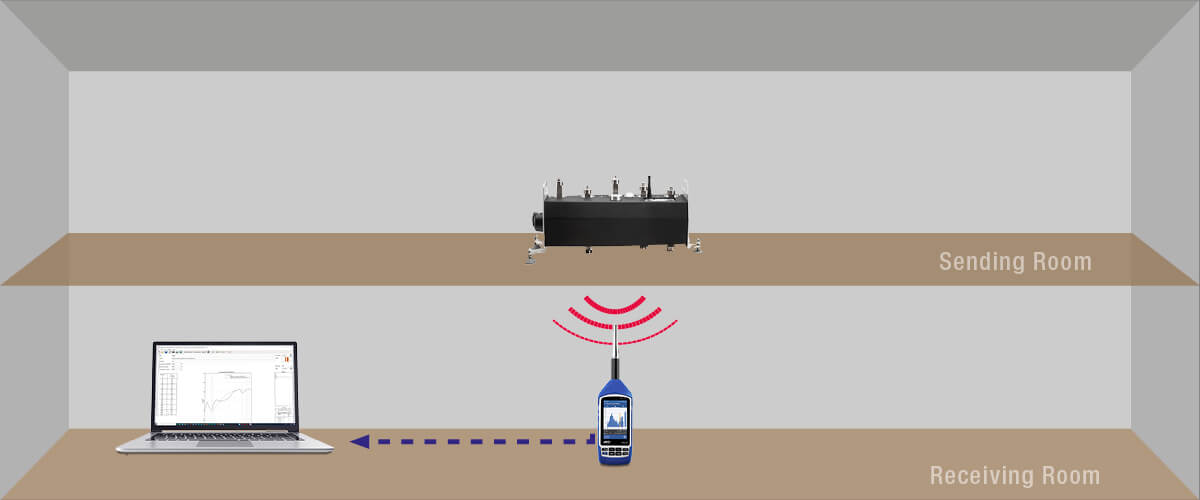For impact sound insulation measurements, either a Tapping Machine or Impact Ball can be used as a source.
The TM EOS2 Tapping Machine produces the impacts on the floor to determine the impact sound insulation. The hammers in this PTB-approved precision instrument hit the ground at a prescribed rate and with a constant, measured force. The remote-controlled TM EOS2 is compliant with the standards that define building acoustics.
The Impact Ball IB01 is a lightweight, easy-to-use, and professional impact source for impact sound insulation measurements of floors and stairs, with an ideal performance for applications in wooden buildings, providing a highly accurate representation of human activities and low-frequency excitation.
The noise spectrum is measured in the receiving room.

TM EOS2 Tapping Machine - Impact sound insulation measurement
In the Sending Room,
-
the Tapping Machine TM EOS2 is placed at several positions on the floor, or
-
the Impact Ball IB01 is dropped vertically from a height of 1 m (± 1 cm) at several positions.

IB01 Impact Ball - Impact sound insulation measurement
The Sound Insulation Reporter PC Software or the XL3 Acoustic Analyzer allows you to correct the reading by deducting any disturbing background noise and reverberations.